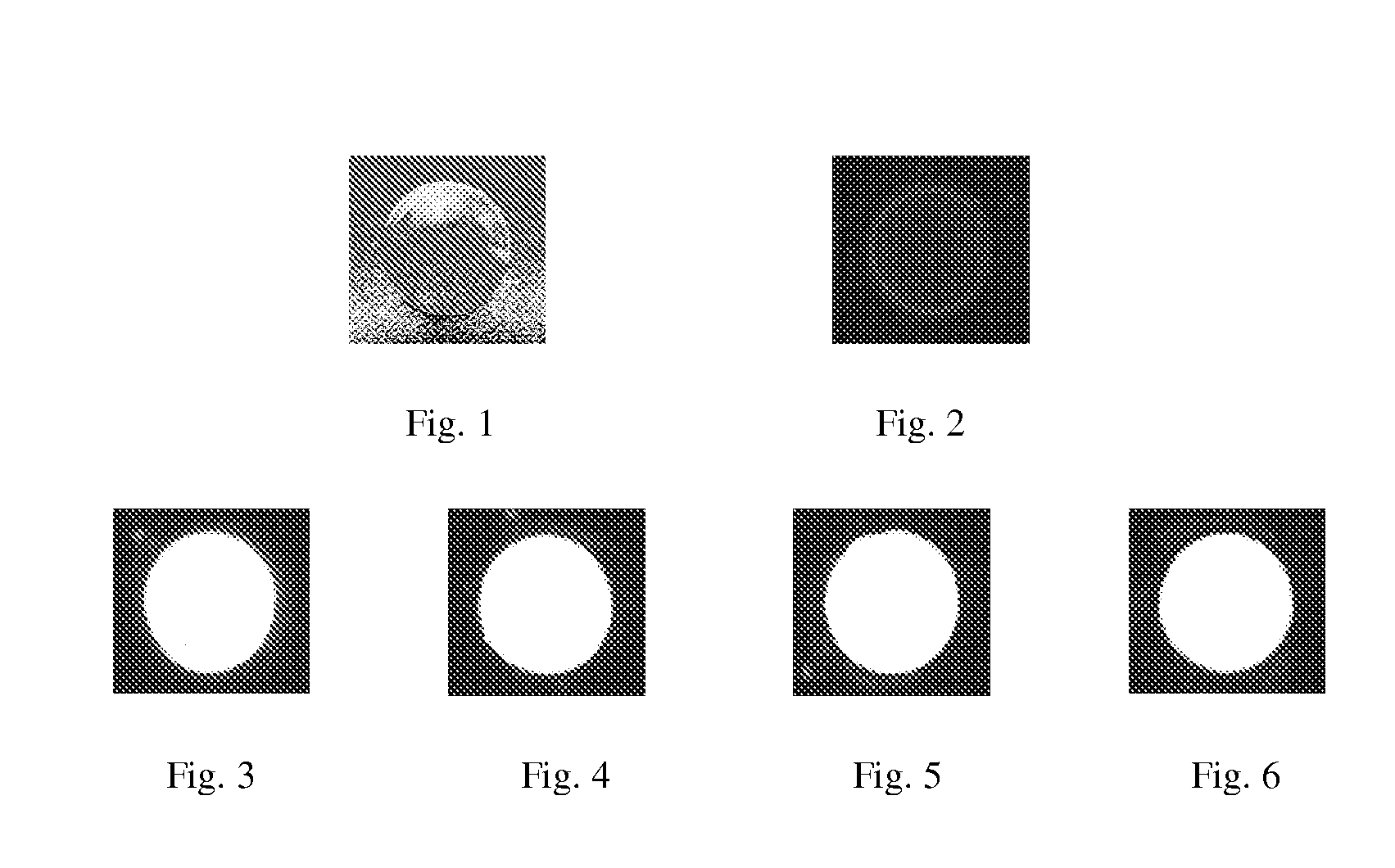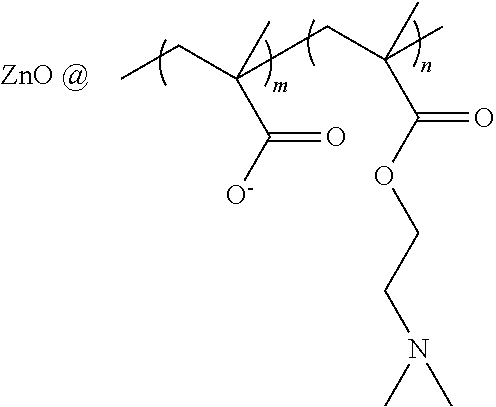COLLAGEN-BASED HYDROGELS LOADED WITH ZnO QDs/pDNA COMPLEXES AS CORNEAL SUBSTITUES
a technology of collagenase and collagen, which is applied in the direction of prosthesis, drug composition, genetic material ingredients, etc., can solve the problems of inability to replace, lack of self-repairing function of corneal endothelial cells, and far exceed the supply, etc., to achieve excellent mechanical properties, optical properties, biocompatibility and collagenase resistan
- Summary
- Abstract
- Description
- Claims
- Application Information
AI Technical Summary
Benefits of technology
Problems solved by technology
Method used
Image
Examples
example 1
[0024]The ratios of Collagen / MPDSAH corneal substitutes are as follows: Type I acidic atelocollagen:MPDSAH=1:0 (w / w), Coll-NH2:EDC:NHS=1:1:1 (mol / mol).
[0025]Preparation of corneal substitutes: 0.5 g of 13.7% (w / w) porcine type I acidic atelocollagen solution was transferred into a syringe mixing system. Calculated volumes of 1-ethyl-3-(3-dimethylaminopropyl) carbodiimide (EDC), and N-hydroxysuccinimide (NHS) solution (EDC:NHS:collagen-NH2=1:1:1) were then added to crosslink the collagen and again thoroughly mixed at 4° C. After adjusting the pH to 5.5 using 2N sodium hydroxide, the final mixed solution was immediately dispensed into cornea shaped moulds. The hydrogels were cured at 100% humidity at room temperature for 16 h and then at 37° C. for 5 h. After demoulding, they were washed thoroughly with 20 ml phosphate buffered saline (PBS, pH=7.4), which was replaced at 12 h intervals. The hydrogels were then immersed in PBS containing 1% chloroform to maintain sterility. The corneal...
example 2
[0028]The components of Collagen / MPDSAH corneal substitutes as follows: Type I acidic atelocollagen:MPDSAH=1:0.3 (w / w), Coll-NH2:EDC:NHS=1:1:1 (mol / mol), MPDSAH:PEGDA (w / w)=2:1, Irgacure 2959:MPDSAH=0.02:1 (mol / mol).
[0029]Preparation of corneal substitutes: 0.5 g of 13.7% (w / w) porcine type I acidic atelocollagen solution was transferred into a syringe mixing system, and mixed with calculated volumes of MPDSAH, PEGDA and Irgacure 2959 solution. Mixing was performed in a sealed syringe system immersed in an ice-water bath. The collagen:MPDSAH ratio was 1:0.3 (w / w), MPDSAH:PEGDA ratio was 2:1 (w / w), and Irgacure 2959:MPDSAH ratio was 0.02:1 (mol / mol). Calculated volumes of 1-ethyl-3-(3-dimethylaminopropyl) carbodiimide (EDC), and N-hydroxysuccinimide (NHS) solution (EDC:NHS:collagen-NH2=1:1:1) were then added to crosslink the collagen and again thoroughly mixed at 4° C. After adjusting the pH to 5.5 using 2N sodium hydroxide, the final mixed solution was immediately dispensed into cor...
example 3
[0032]The components of Collagen / MPDSAH corneal substitutes as follows: Type I acidic atelocollagen:MPDSAH=1:1 (w / w), Coll-NH2:EDC:NHS=1:1:1 (mol / mol), MPDSAH:PEGDA (w / w)=2:1, Irgacure 2959:MPDSAH=0.02:1 (mol / mol).
[0033]Preparation of corneal substitutes: 0.5 g of 13.7% (w / w) porcine type I acidic atelocollagen solution was transferred into a syringe mixing system, and mixed with calculated volumes of MPDSAH, PEGDA and Irgacure 2959 solution. Mixing was performed in a sealed syringe system immersed in an ice-water bath. The collagen:MPDSAH ratio was 1:1 (w / w), MPDSAH:PEGDA ratio was 2:1 (w / w), and Irgacure 2959:MPDSAH ratio was 0.02:1 (mol / mol). Calculated volumes of 1-ethyl-3-(3-dimethylaminopropyl) carbodiimide (EDC), and N-hydroxysuccinimide (NHS) solution (EDC:NHS:collagen-NH2=1:1:1) were then added to crosslink the collagen and again thoroughly mixed at 4° C. After adjusting the pH to 5.5 using 2N sodium hydroxide, the final mixed solution was immediately dispensed into cornea ...
PUM
| Property | Measurement | Unit |
|---|---|---|
| Temperature | aaaaa | aaaaa |
| Temperature | aaaaa | aaaaa |
| Time | aaaaa | aaaaa |
Abstract
Description
Claims
Application Information
 Login to View More
Login to View More - R&D
- Intellectual Property
- Life Sciences
- Materials
- Tech Scout
- Unparalleled Data Quality
- Higher Quality Content
- 60% Fewer Hallucinations
Browse by: Latest US Patents, China's latest patents, Technical Efficacy Thesaurus, Application Domain, Technology Topic, Popular Technical Reports.
© 2025 PatSnap. All rights reserved.Legal|Privacy policy|Modern Slavery Act Transparency Statement|Sitemap|About US| Contact US: help@patsnap.com


